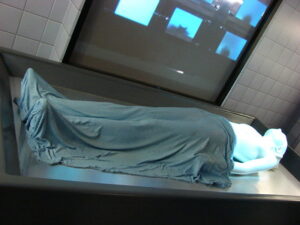Last July, I wrote about New Jersey City University. The university president announced her resignation, after leaving the school mired in a $10M operating deficit. NJCU had so little cash in its coffers that it asked the New Jersey State Legislature for a cash advance. Additionally, NJCU carries about $150M in high risk bond debt that has destabilized the school’s operating finances.
In the lead-up to the school’s dramatic budgetary bellyflop, the NJCU faculty passed a vote of no confidence in the president, arguing that NJCU’s precarious financial position was the result of lavish spending on the part of the administration; unrestrained spending; lax oversight; and unwise capital projects on campus.
Following President Sue Henderson’s resignation, NJCU appointed Jason Kroll – the school’s Vice President and Chief Strategy Officer – as its interim chief executive. Kroll accepted the position on the condition that his appointment would neither be permanent nor long-term. For the past six months, Kroll has attempted to right the ship in preparation for new leadership.
Despite earlier assurances that changes at the school would not impact students, less than a month ago, NJCU announced that it would reduce expenses by slashing 48 undergraduate programs, 24 minors, 28 graduate programs, 10 certificate programs, and one doctoral program. The cuts mean that the school will eliminate 30 tenured faculty and 19 adjunct faculty positions. NJCU will “teach out” the affected programs. Teaching position eliminations will begin July 1, 2023.
Bond debt crisis leads to faculty layoffs, reorganization and athletic cuts
According to an explanation on the university’s website, the actual size of NJCU’s structural deficit was $20M. That forced the university to reevaluate all academic programs among its four colleges.
Academic programs weren’t the only areas slated for reduction. The new cost-cutting measures also reduced the size of the university’s administration by 41%. In addition to staff reductions, the university’s austerity measures included reorganizing NJCU’s senior leadership. That meant the consolidation of three Vice President positions into one.
The school also discontinued five sports programs including men’s and women’s tennis, men’s and women’s golf, and men’s cross country. Those eliminations will take effect May 30, 2023.
In total, Kroll’s team has identified more than half of the $20M in expenditure reduction the university needs to close its structural deficit. Last week, he announced that the school will be handing the reins over to another interim president, Andres Acebo. Acebo had previously been an Executive Vice President and general counsel. He will serve as NJCU’s interim president for the next 24 months.
So, naturally Moody’s is not amused. They’ve downgraded NJCU’s credit rating to Ba2, which is non-investment grade and poses a substantial risk to the investor.
The school floated nearly $150M in revenue-backed debt to pay for construction projects, including luxury student housing. That issue included conditions that NJCU pledge to raise tuition as necessary to cover the school’s debt service and operating costs; keep 35 days of cash on hand; and maintain a debt service reserve fund for the school’s bond issues. Failure to meet these conditions could be considered a “default event” even if the school doesn’t miss a payment.
Student housing plan gamble turned sour
The student housing plan, which began in 2016, involved the construction of 1,000 new luxury apartment units in 8 buildings at a total cost of $400M. Building 1,000 units of student housing was a major gamble that has not paid off to date. The plan assumed enrollment increases that would fill these newly constructed luxury units.
In 2016, NJCU’s unduplicated headcount was 10,062, including 7,469 undergraduates and 2,593 graduates. The school’s FTE headcount for undergraduate and graduate students was 5,417 and 1,112 respectively.
In 2021, NJCU’s unduplicated headcount was slightly less than 9,000 students. The school’s full-time-equivalent undergraduate enrollment was 5,222, and its full-time equivalent graduate enrollment was 1,054. In five years, the school’s undergraduate enrollment declined by 3.5%, and its graduate enrollment declined by more than 5%.
The debt service on the apartment project, combined with outstanding debt from bond issues dating back to 2007, have exhausted the school’s general fund. This precipitated the school’s current fiscal crisis. And with nearly $10M in expenses left to cut, it’s clear that the school will need to operate as a much smaller version of itself – with all the debt incurred under its former self.
NJCU offers a somewhat extreme example of what happens to institutions that have both lax oversight and uncontrolled spending. Any institutional board must carefully consider the risks of capital projects that promise revenue generation sufficient to repay the project’s bond debts. They must insist on a back-up plan for missed revenue targets and full administrative accountability for overly optimistic revenue projections.
Lax oversight over public funding simply cannot happen. Approving everything and questioning nothing is a recipe for disaster.
Photo Credit: s_backus_saccoliti , via Flickr


















